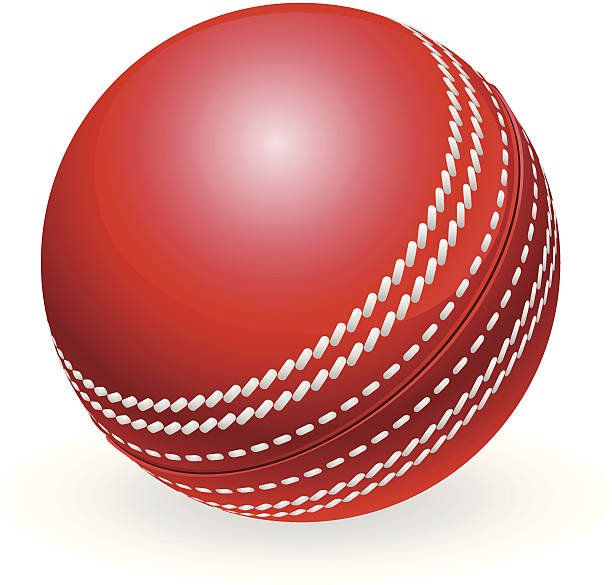Contents
- 1 Cricket Ball Weight
- 2 All About Cricket Ball Weight: Striking the Perfect Balance
- 2.0.1 Frequently Asked Question Regarding – Cricket Ball Weight
- 2.0.2 Q. what is the weight of cricket ball(Or Cricket Ball Weight ) ?
- 2.0.3 A. Between 5.50 and 5.75 ounces, which is equivalent to 155.9. 0-163.01 g.
- 2.0.4 Q. what is the weight of cricket ball in kilograms ?
- 2.0.5 A. the weight of ball is 5.75 ounces/163 g/0.163kg.
- 2.0.6 Q. what is the weight of cricket ball in grams ?
- 2.0.7 A. Between 155.9. 0-163.01 g .
Cricket Ball Weight
All About Cricket Ball Weight: Striking the Perfect Balance
The cricket ball, a seemingly simple sphere of cork and leather, is a crucial element in the game. Its weight plays a significant role in how the ball behaves in the air and off the pitch, influencing everything from the bowler’s pace and delivery style to the batsman’s ability to stroke and defend. Understanding cricket ball weight is essential for appreciating the complexities and nuances of the sport.
Official Regulations:
The Laws of Cricket, as set forth by the Marylebone Cricket Club (MCC), dictate the weight specifications for cricket balls. For men’s cricket, a new ball must weigh between 5.5 ounces (155.9 grams) and 5.75 ounces (163 grams). The circumference also falls within a specific range, measuring between 8.81 inches (22.4 centimeters) and 9 inches (22.9 centimeters).
These regulations ensure a standardized playing experience across different levels of cricket. A ball within these parameters allows for consistent bounce, pace, and swing, making the game fair for both bowlers and batsmen.
Weight Variations for Different Cricket Formats:
While the men’s cricket ball has a set weight range, variations exist for other formats:
-
Women’s Cricket: Women’s cricket balls are slightly lighter and smaller, weighing between 4.94 ounces (140 grams) and 5.31 ounces (151 grams) with a circumference of 8.25 inches (21.0 centimeters) to 8.88 inches (22.5 centimeters). This adjustment accounts for the different physical attributes of female players.
-
Junior Cricket: Recognizing the needs of young players, cricket balls for junior matches are even lighter. They typically weigh between 4.69 ounces (133 grams) and 5.06 ounces (144 grams) with a circumference of 8.06 inches (20.5 centimeters) to 8.69 inches (22.0 centimeters). This allows them to develop their skills with a ball that’s easier to handle and control.
Impact of Weight on Ball Behavior:
The weight of a cricket ball significantly impacts its performance in several ways:
-
Pace and Bounce: A heavier ball tends to retain its momentum better, leading to faster bowling speeds and a higher bounce off the pitch. This favors swing bowlers who rely on movement through the air to deceive the batsman.
-
Spin: Conversely, a lighter ball loses momentum quicker, resulting in slower bowling speeds and lower bounce. This can benefit spin bowlers who use variations in flight and dip to get the ball to turn off the pitch.
-
Durability: A slightly heavier ball can be constructed with a sturdier cork core, offering greater durability and lasting longer throughout the innings. This becomes particularly important in longer formats like Test cricket.
Weight and Playing Conditions:
The weight of the ball can also be influenced by playing conditions:
-
Humidity: In humid environments, a heavier ball can become slightly heavier due to moisture absorption. This can make it easier for swing bowlers to generate movement.
-
Altitude: At high altitudes, the air is thinner, offering less resistance to the ball. A slightly heavier ball can help compensate for this, maintaining a consistent pace and bounce.
The Art of Choosing a Cricket Ball:
The choice of cricket ball often depends on the format of the game, pitch conditions, and bowling strategies. For instance, a curator preparing a pitch for a swing-bowling friendly Test match might prefer a slightly heavier ball to maximize lateral movement. Conversely, a limited-overs match focused on spin bowling might utilize a lighter ball to aid the spinners.
The Importance of Ball Maintenance:
Maintaining the weight and condition of the cricket ball throughout the innings is crucial. Umpires periodically check the ball for wear and tear, replacing it with a new one if necessary. This ensures a fair contest where both teams have the opportunity to play with a ball in optimal conditions.
Conclusion:
Cricket ball weight, though seemingly a minor detail, plays a significant role in shaping the game. By understanding the regulations, variations for different formats, and the impact on ball behavior, we gain a deeper appreciation for the science and strategy behind this beloved sport. The perfect cricket ball weight strikes a balance between pace, spin, and durability, ultimately creating a captivating contest between bowler and batsman.
Frequently Asked Question Regarding – Cricket Ball Weight
Q. what is the weight of cricket ball(Or Cricket Ball Weight ) ?
A. Between 5.50 and 5.75 ounces, which is equivalent to 155.9. 0-163.01 g.
Q. what is the weight of cricket ball in kilograms ?
A. the weight of ball is 5.75 ounces/163 g/0.163kg.
Q. what is the weight of cricket ball in grams ?
A. Between 155.9. 0-163.01 g .


